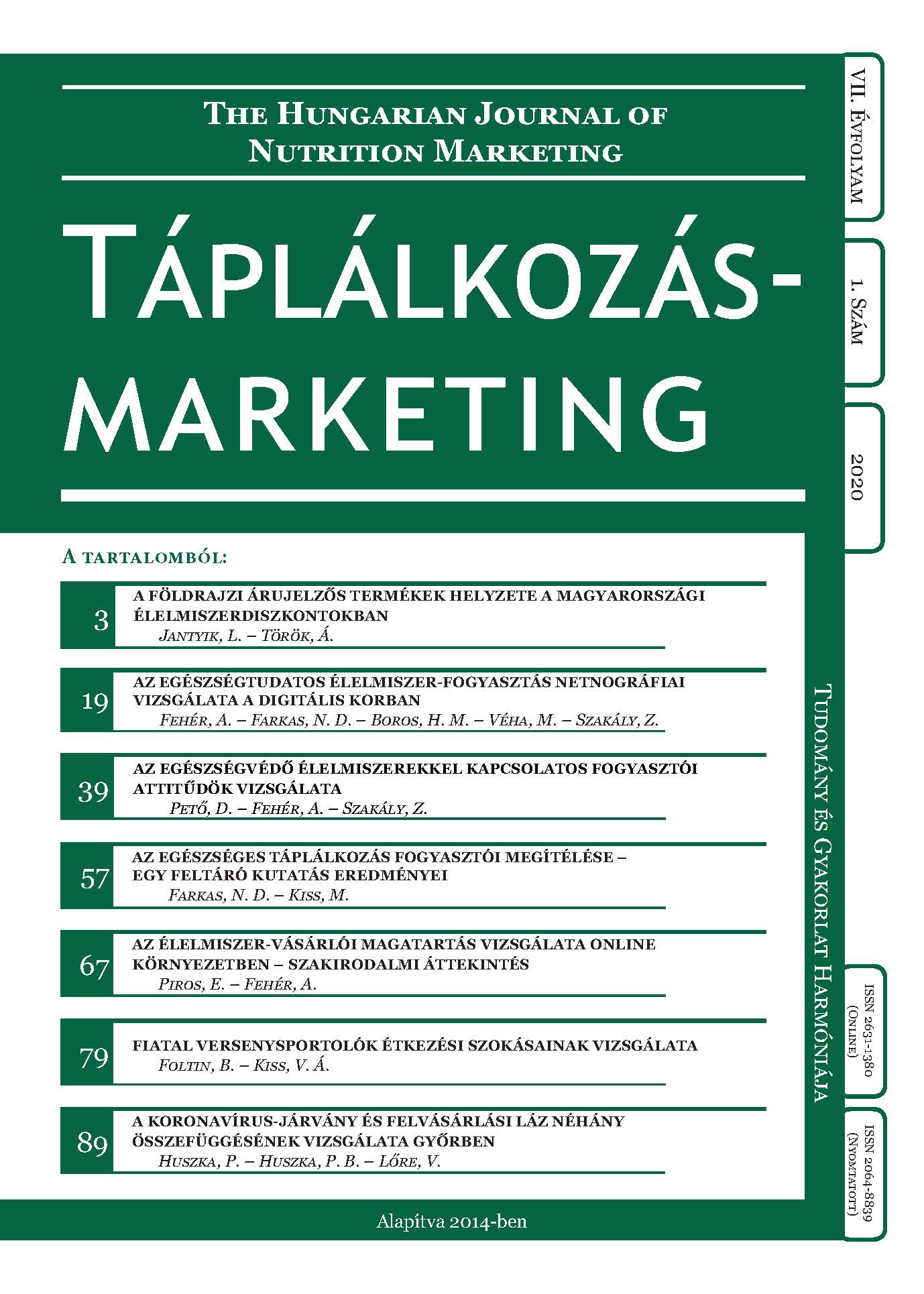Analyzing Consumer Attitudes Towards Health-protecting Food
Authors
View
Keywords
License

This work is licensed under a Creative Commons Attribution-NoDerivatives 4.0 International License.
How To Cite
Abstract
The main goal of our research was to analyze the role of health-protecting food in our daily nutrition. In our secondary research, we analyzed the generalities and characteristics of health and health behavior with the help of relevant domestic and foreign literature. We analyzed the domestic tendencies of health in details. We examined the most important characteristics of functional foods and investigated the factors of personalized nutrition. Based on a literature review, in our primary research we conducted an online questionnaire survey with 231 respondents. Our survey cannot be considered representative, however, the proportion of genders in our sample population is almost the same as the Hungarian population’s. In the questionnaire survey, we examined the frequency of consumption of health-protecting food. After that, we analyzed respondents’ perceptions of the actual health effects of health-protecting food. We have measured consumer attitudes towards health-protecting food. We analyzed the perception of potential health risks and problems from the consumer perspective. We measured the impact of various health factors on shopping. Besides, we have explored our intention to participate in personalized nutrition-related programs. Based on our research, most of the analyzed health-protecting food is consumed once or twice a week. It can be stated that the respondents considered the examined food categories less scientifically proven. We could identify the preventive behaviors of respondents for various health problems. However, there is also uncertainty in the decision of respondents in what is the right way to prevent the diseases. In this uncertain situation, only experts can provide real help to them.
JEL Classification: Q16, Q12, Q13, O32


 https://doi.org/10.20494/TM/7/1/3
https://doi.org/10.20494/TM/7/1/3





